Aerospace airplanes: even in the atmosphere, even in a vacuum
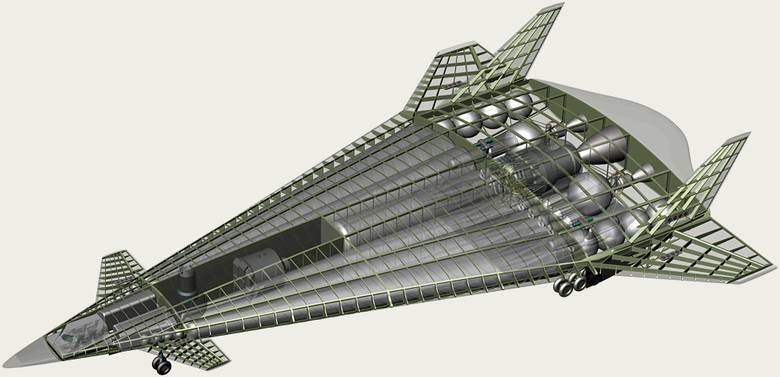
In the coming years, the subject of aerospace airplanes (VKS) - aircraft capable of flying in space and the atmosphere - may gain a second wind. On the one hand, private companies do not abandon attempts to create commercial space tourism vehicles. On the other hand, the development of technology brings us closer to the commissioning of aerospace drones capable of hanging out in space for years before fulfilling its mysterious purpose . In addition, the legacy of the USSR in the form of Progress cargo ships ceases to satisfy plans for the further development of peaceful space programs. So it is possible that in the depths of the Russian military and civilian design bureaus, work is already under way to create a videoconferencing system. And although the story does not like when it is "laid down", but in addition to the "Buran" we had quite a few interesting spacecraft / cosmoplan projects that remained on paper. Recall some of them.
About terminology: today, under the space plane they mean a ship that is being put into orbit with the help of its engines and a launch vehicle or a speeding plane. A spacecraft is a ship that reaches space exclusively at the expense of its own engines.
MAXIM

')
In the early 1980s, several years before the end of work on the Energia-Buran system, the successful launch of which would prove the working capacity of the design of the Soviet space plane, the MAKS project, a reusable aerospace system, was launched. There were still a few years before the commissioning of the Mir station. And instead of "Progress" and "Unions" reusable manned and automatic ships were supposed to deliver to the station and take astronauts from it, as well as deal with supplies.

Within the framework of MAKS, three types of space plans were developed:
- Unmanned disposable MAKS-T. Output weight is up to 18 tons.

- Unmanned reusable MAKS-M.

- Manned reusable MAX-OC-P. Length - 19.3 m, wingspan - 13.3 m, weight - 27 tons.
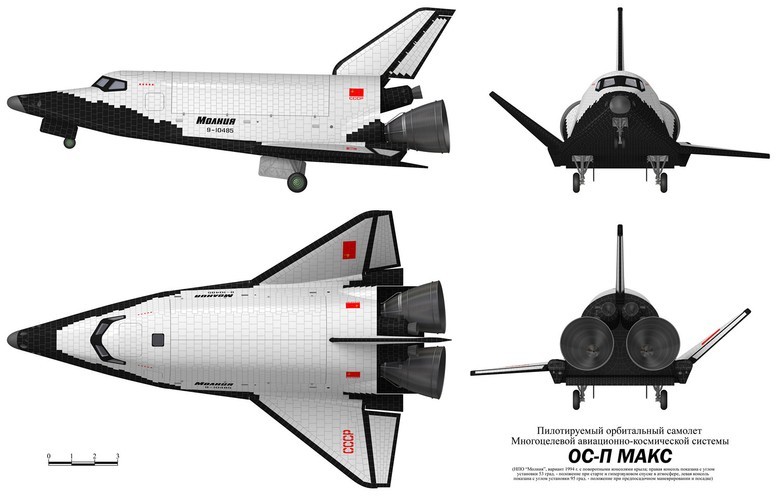
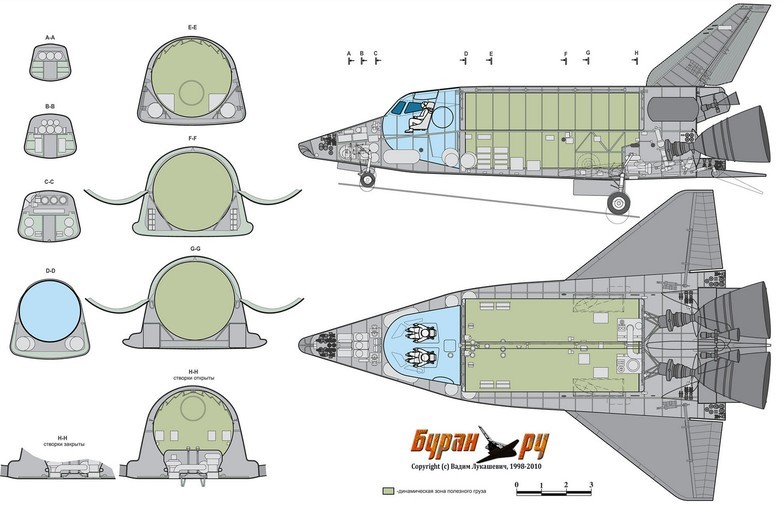
For comparison: “Buran” was 36.4 m long, had a wingspan of 24 m and a launch weight of 105 tons.
Unlike the large and heavy Buran, which was put into orbit by the most powerful Energia, the MAKS spaceplanes were supposed to be displayed by one of the masterpieces of the Soviet aviation industry - the An-225 Mriya. This allowed to significantly reduce the cost of launches.
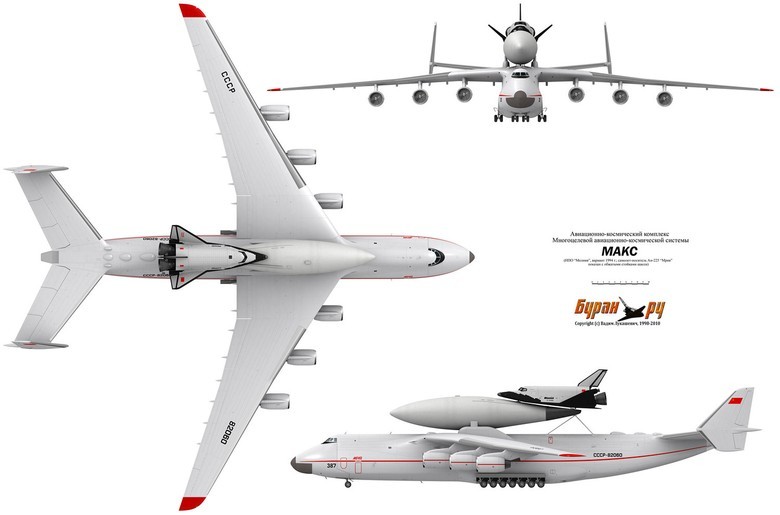
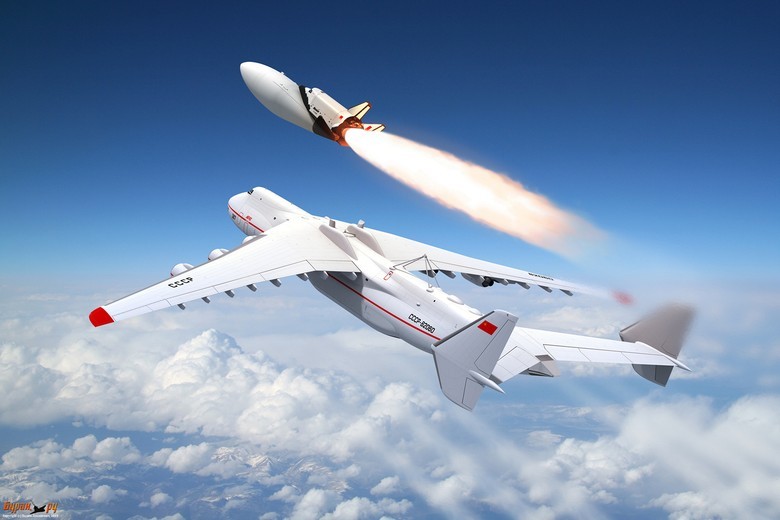
Unfortunately, despite the in-depth study of the project and the construction of full-size layouts, the MAKS system fell victim to the collapse of the country.
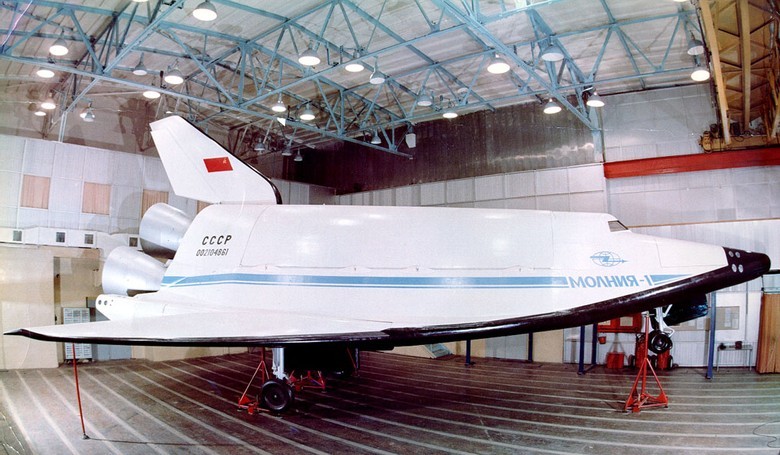
Estimate the dimensions of the fuel tank layout:
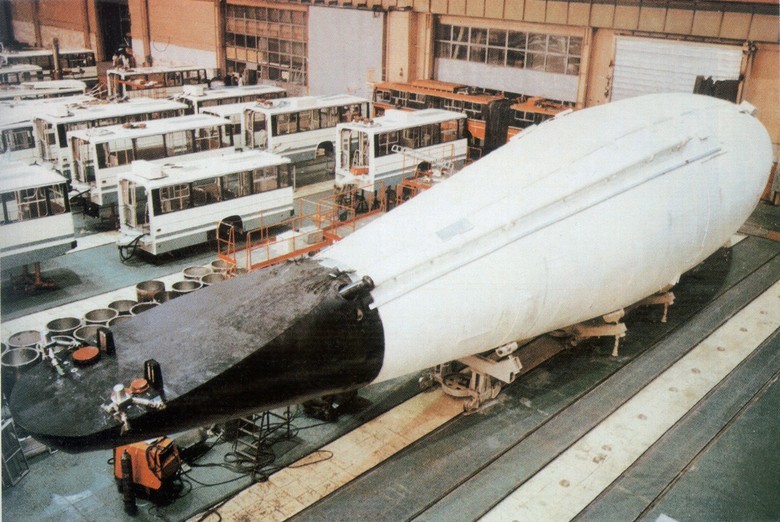
“Small but three”
A couple of years after the start of work on the MAKS, NPO Energia set about creating a whole family of reusable manned spacecraft. On the “Buran” project, numerous ideas were worked out, which formed the basis of more compact, and therefore much cheaper, in operation ships of the OK family: OK-M, OK-M1 and OK-M2. Like the Buran, they were to be launched into space with the help of launch vehicles.
OK-M had an aerodynamic scheme similar to the “Buran” and MAKS-OS, but its mass was only 15 tons with a span of 10 m and a length of 15 m. It had to take up to 3.5 tons of cargo into space, or four cosmonauts (two more person - crew). OK-M1 and OK-M2 were twice as heavy: weight 30–32 tons, length about 19 m, wingspan 12.5 m, cargo weight - 7.2 and 10 tons, respectively. Crews - four people each.
Placement options on launch vehicles:
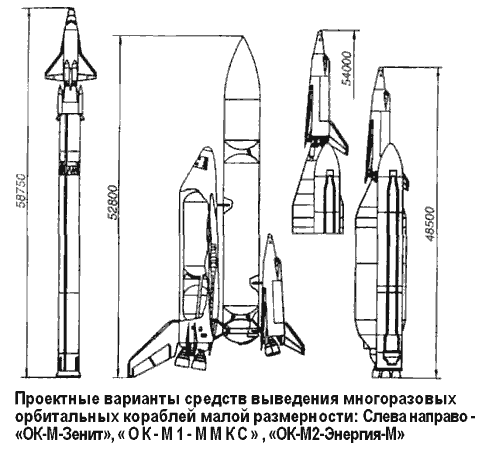
OK-M2:

"Tupolev" in space
In the late 1980s - early 1990s, the Tupolev Design Bureau was working on a project for a Tu-2000 hypersonic orbital bomber.
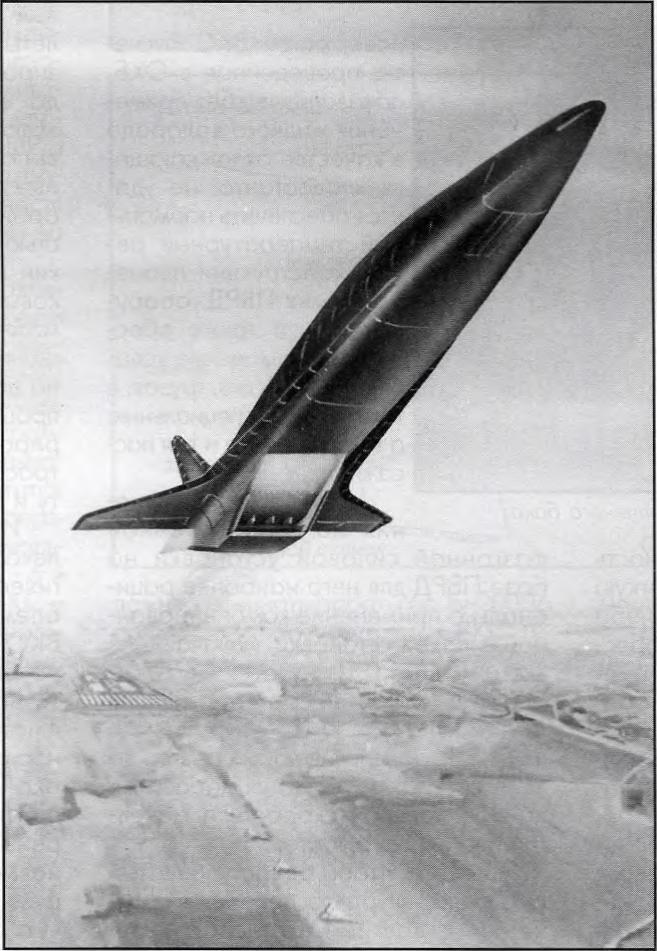
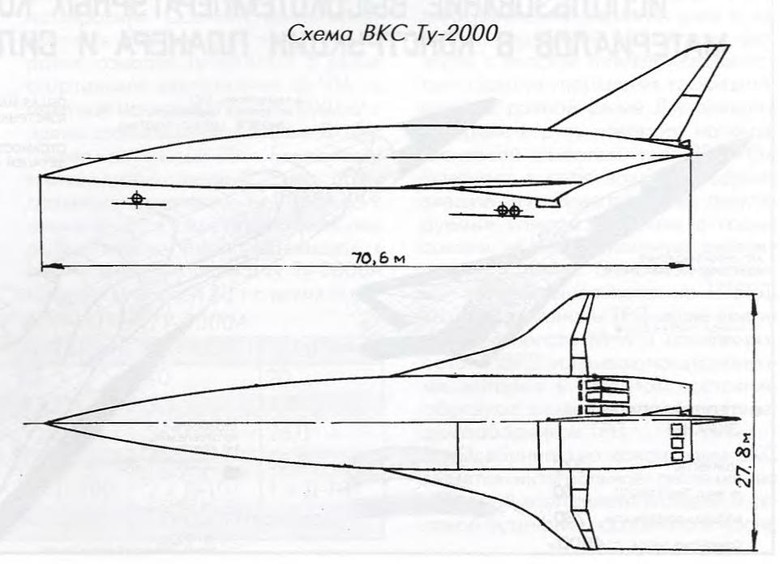
The Tu-2000 was supposed to take off and land independently and accelerate to 20-25 Mach. The autonomy of orbital flight is one day, with the possibility of flying in the atmosphere at hypersonic speed, the ability to maneuver at subsonic speeds. Projects of several experimental prototypes were developed:
- Three variants of the VKS Tu-2000A of various sizes (length 26–55 m) for testing atmospheric flights.
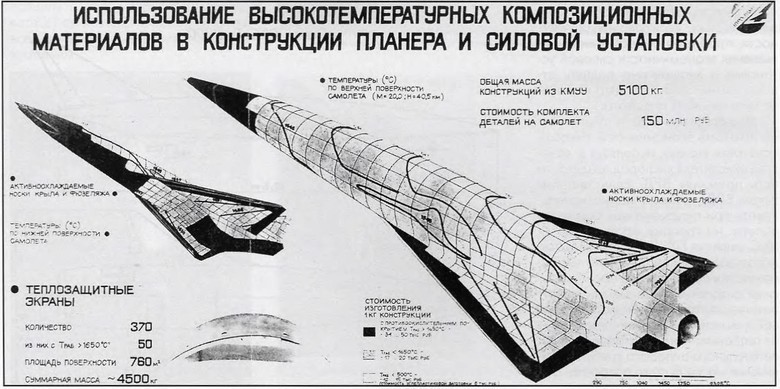
- Reusable manned VKS with a take-off mass of about 250-280 tons (half accounted for fuel, liquid hydrogen) with a length of up to 75 m and a wingspan of 28 m. The crew - two people.
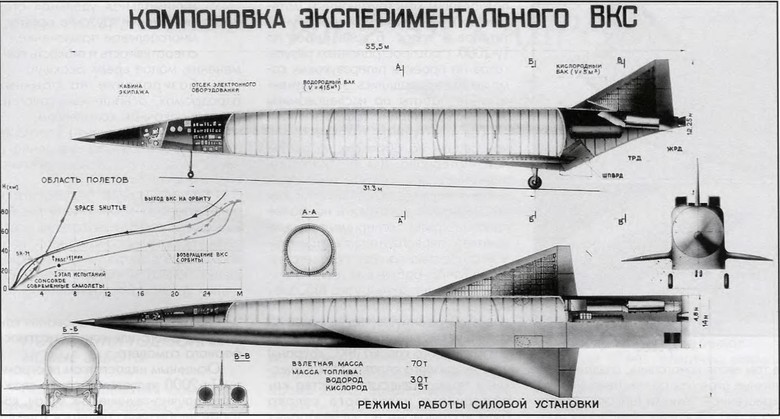
Finally, a Tu-2000B strategic bomber with a range of 10,000 km and a take-off weight of 350 tons was thought out on the basis of the VKS. Its speed at an altitude of 30 km should have been 6 Machs.
Atomic "gurkolot"
In the 1970s, a project of a monstrous spacecraft with 10 hypersonic ramjet engines for flight in the atmosphere and a nuclear jet engine for flight in space was worked out at one of the research institutes of the Ministry of Defense. He received the designation MG-19 (Myasishchev - Gurko, "gurkolot").
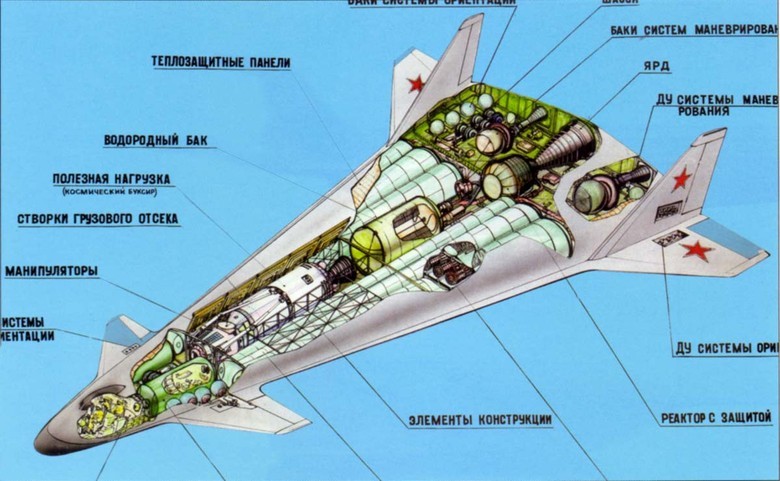

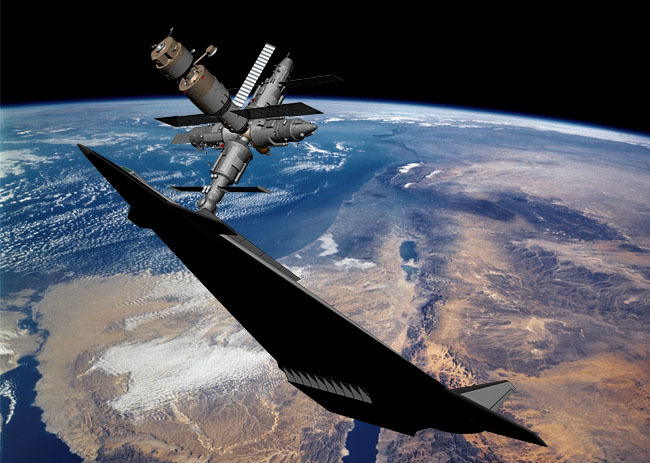
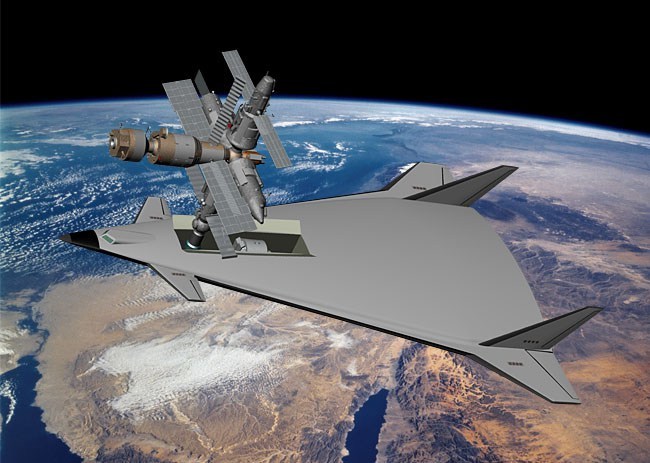
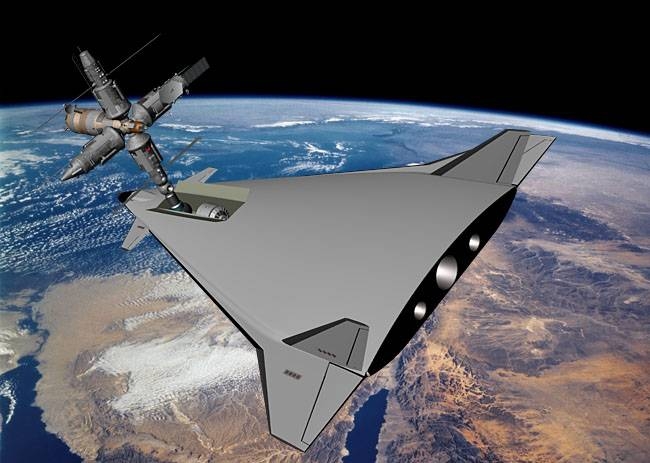
The advantage of the MG-19 over the Energy-Buran system, the development of which also began in the 70s, was the lack of a launch vehicle or aircraft for withdrawal. The cyclopical size of the spacecraft had to take off, go out into space, perform the necessary work and return to the airfield. With a mass of about 500 tons, this monster was supposed to bring up to 45 tons of cargo into space. Nevertheless, the project was closed at a fairly early stage, probably due to an overly bold idea.
Raks
RAKS is a Russian aerospace plane. Work on it began in 1993. The project created a hypersonic flying laboratory "Cold", which was reached at a speed of 6.5 Mach.

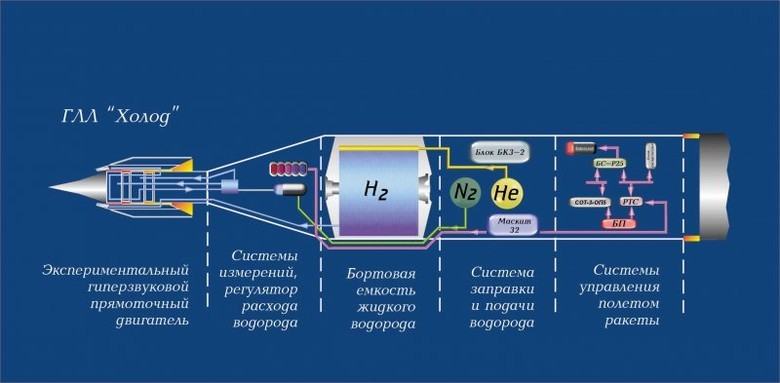
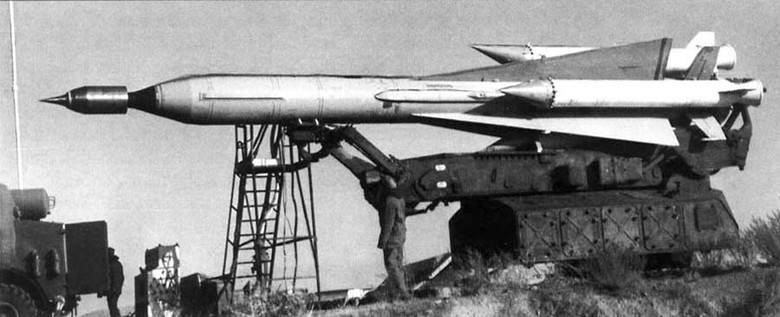
Then an experimental hypersonic aircraft “Igla” was developed, on which a scramjet was installed and even higher flight speeds were worked out - up to M = 14.

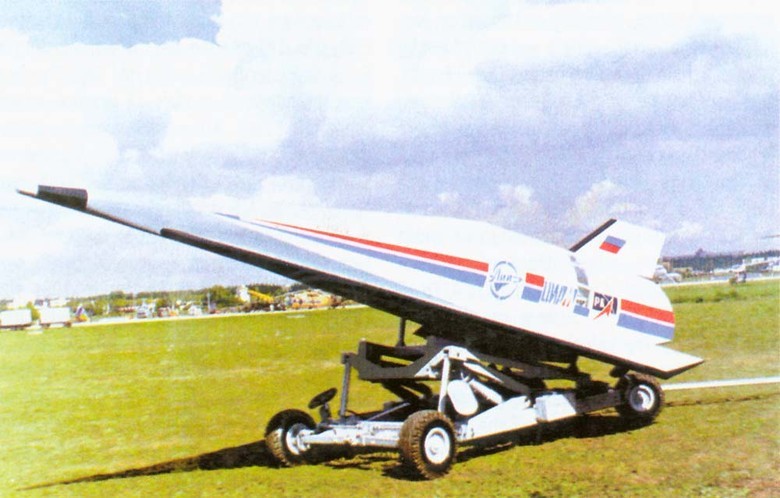
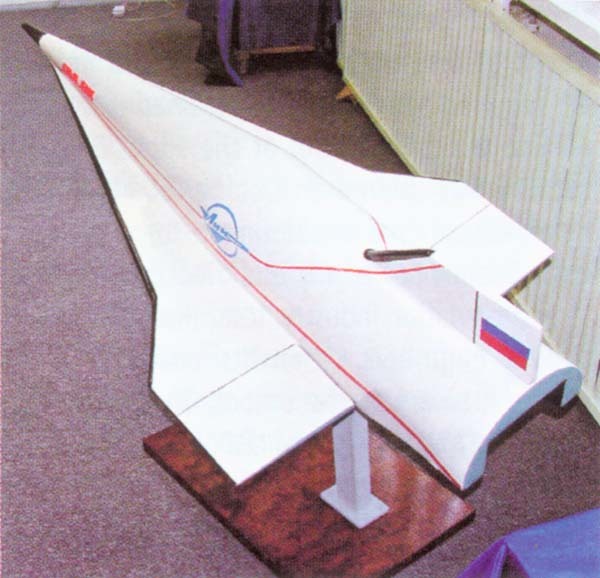
The further fate of the RAKS project is foggy, the information is extremely fragmentary, and even that in the form of rumors. Probably, the project is classified and today, on the basis of the RAKS, our response to the Pentagon is being created.
Space clipper
Finally, mention should be made of the Clipper spacecraft project, which started in the 1990s and was closed in 2006. It was a small reusable space plan with a starting mass of 13-14.5 tons, created in two versions: winged and wingless. It was to be used both in manned and unmanned versions, and was intended for the rotation of astronauts at space stations, the transport of goods, research and tourist flights.
Clipper’s ability to maneuver in the atmosphere would be rather limited due to the small size of the wings. It turned out a ballistic flight with the possibility of correction. And nothing about the wingless modification and nothing to say - in fact, it's just a capsule with a parachute landing system. When returning to Earth, the ship was supposed to hold up to six people (two of them were crew members) and up to 700 kg of cargo.
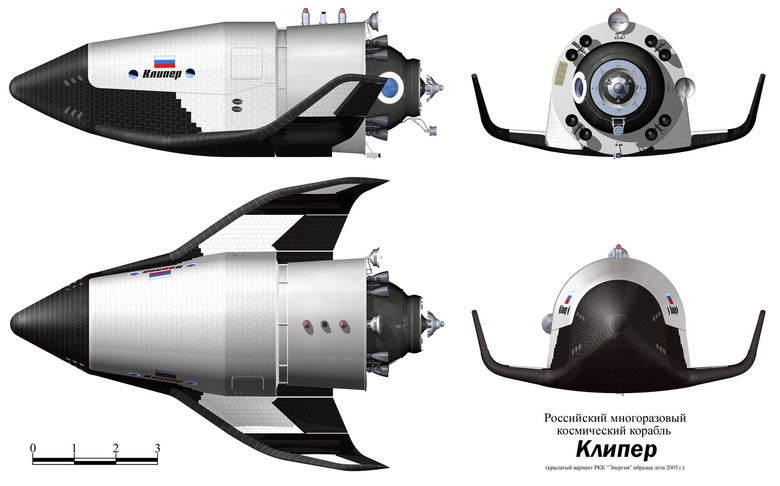
Animation Gifs:


A number of developments for the Clipper should be used in the “Federation” that is being created today, but this will be a ship of the “classical” scheme: launching into space by a carrier rocket and a ballistic return with a parachute landing.
* * *
As mentioned at the beginning, it is possible that new projects of spaceplanes and spacecraft are being created in Russian private and state-owned design bureaus. However, these are VERY expensive projects, which are well illustrated by the developments of NASA and private American corporations. But still I hope that we will not miss our chances in this new space race.
Source: https://habr.com/ru/post/401791/
All Articles